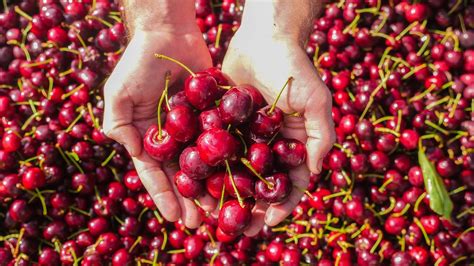From Orchard to Bottle: Crafting Cherry Wine
Cherry wine. The very phrase conjures images of sun-drenched orchards, ripe fruit bursting with sweetness, and the rich, complex aroma of a perfectly aged vintage. But the journey from orchard to bottle is far more intricate than it might seem. This article delves into the fascinating process of crafting cherry wine, exploring everything from selecting the right cherries to the final bottling.
What Types of Cherries are Best for Winemaking?
The success of any cherry wine hinges significantly on the quality of the fruit. Not all cherries are created equal when it comes to winemaking. While many varieties can be used, certain types are better suited than others due to their sugar content, acidity, and tannin levels. Tart cherries, like Montmorency and Balaton, are generally preferred for their high acidity, which balances the sweetness and provides structure to the finished wine. Sweet cherries, such as Bing and Rainier, can be used, often in blends, but may require adjustments to acidity levels during the winemaking process. The best approach is often to experiment and discover which varieties perform best in your specific climate and terroir.
How to Prepare Cherries for Winemaking?
Proper preparation is key to producing high-quality cherry wine. Begin by carefully sorting the cherries, discarding any bruised, rotten, or damaged fruit. Then, thoroughly wash the cherries to remove any dirt or debris. The next step often involves stemming the cherries, although some winemakers leave the stems on, contributing subtle nuances to the flavor profile. Finally, the cherries need to be crushed, either by hand or using a crusher, releasing their juices and pulp.
What is the Fermentation Process for Cherry Wine?
Fermentation is the heart of winemaking, transforming the natural sugars in the cherries into alcohol. After crushing, the cherry pulp is typically placed in a fermenter, usually a food-grade plastic bucket or a glass carboy. Yeast is then added – either wild yeast naturally present on the fruit or a commercial wine yeast strain. The yeast consumes the sugars, producing alcohol, carbon dioxide, and other byproducts that contribute to the wine's flavor and aroma. The fermentation process typically takes several weeks, during which time the temperature should be carefully monitored to maintain optimal conditions.
How Long Does Cherry Wine Take to Ferment?
The fermentation time for cherry wine can vary, depending on factors like temperature, yeast strain, and the sugar content of the cherries. It typically ranges from several weeks to several months. Patience is a virtue in winemaking!
What are the Essential Equipment and Ingredients?
Crafting cherry wine requires specific equipment and ingredients. Essential items include a fermenter, airlock, siphon tubing, bottles, corks, and a wine press (optional). Key ingredients, aside from the cherries themselves, are yeast, sugar (often needed to adjust the initial sugar level), and sometimes acid blend to balance the wine's acidity.
How Do I Age and Bottle Cherry Wine?
Once fermentation is complete, the wine needs to be racked, transferring it to a clean container to separate it from the sediment. This process is often repeated several times during aging. Aging allows the wine to mellow and develop its complex flavors. Cherry wine can be aged in glass carboys or oak barrels, with the latter imparting subtle oaky notes. The aging time can range from several months to several years, depending on the desired complexity and flavor profile. Finally, the aged wine is carefully bottled and corked, ready to be enjoyed.
What are the Common Mistakes to Avoid When Making Cherry Wine?
Many pitfalls can derail a cherry winemaking endeavor. Sanitation is paramount to prevent unwanted bacteria or wild yeasts from spoiling the wine. Proper temperature control during fermentation is also crucial, as extreme temperatures can kill the yeast or produce off-flavors. Finally, patience is essential. Rushing the process can result in a less flavorful and balanced wine.
By following these steps and paying close attention to detail, you can craft a delicious and memorable cherry wine, capturing the essence of the orchard in every sip. Remember, the journey is as important as the destination – enjoy the process!

